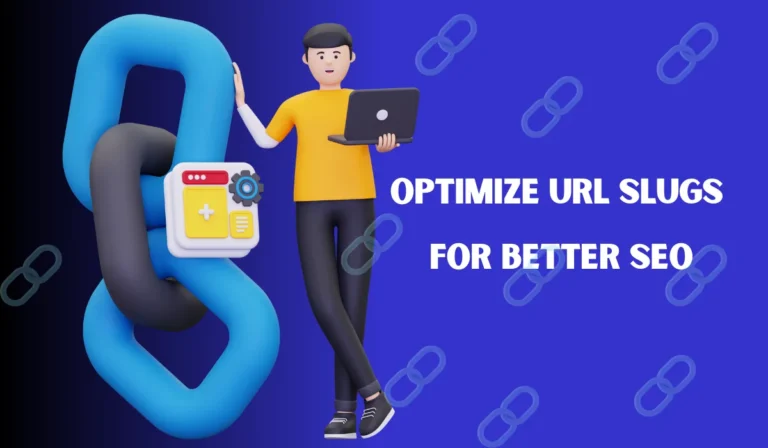Traffic Tsunami: 8 Major Google Algorithm Updates That Impact You
Discover the profound effects of major Google algorithm updates on your online presence.
Understanding the nuances of these updates and their impact is essential for businesses striving to maintain a robust online presence.
With each algorithm update, Google aims to refine its search results, ensuring users find the most relevant and high-quality content. However, these updates often lead to dramatic shifts in rankings, prompting the need for agile strategies that can weather the changes.
Learn more about the benefits of SEO to rank your article and let me know your views on the same.
Let’s dive into each major Google algorithm in detail and understand their impact on search engine optimization (SEO) and the digital landscape:
1. Panda: Content Quality Crusader
Launched: February 24, 2011
Focus: Panda was designed to target and penalize websites with low-quality or thin content. It aimed to improve the quality of search results by rewarding websites with valuable and original content.
Impact: Websites with duplicate, irrelevant, or keyword-stuffed content saw significant drops in rankings. To thrive post-Panda, website owners had to focus on creating high-quality, user-centric content that provided real value to visitors.
How to check: To determine if your website was affected by Google’s Panda algorithm update, follow these steps:
- Check for drops in traffic and rankings
- Compare with Panda update dates
- Assess content quality for thin or duplicate content
- Analyze user engagement metrics
- Identify and improve thin content
- Avoid keyword stuffing
How to recover: Here are 10 solutions to help you recover if your website is impacted by the Panda Algorithm:
- Quality Content Improvement: Review and enhance the quality of your website’s content. Make sure it’s original, valuable, and relevant to your target audience.
- Duplicate Content Check: Eliminate duplicate or low-quality content from your site. This can involve rewriting or removing redundant content.
- Keyword Research and Optimization: Conduct thorough keyword research and optimize your content accordingly. Focus on using relevant keywords naturally and avoid keyword stuffing.
- User Experience Enhancement: Improve the overall user experience of your website. Ensure easy navigation, fast loading times, and a mobile-friendly design.
- Regular Content Updates: Regularly update your website with fresh, high-quality content. This signals to search engines that your site is actively maintained and valuable to users.
- Avoid Thin Content: Avoid having thin, shallow content pages that provide little value to visitors. Instead, aim for in-depth, comprehensive articles.
- Engage with Your Audience: Encourage user engagement through comments, shares, and social media interactions. This can help establish your site as a trusted resource.
- Backlink Audit: Conduct a backlink audit to identify and disavow low-quality or spammy backlinks that might be affecting your site’s reputation.
- Improve Page Speed: Optimize your website’s loading speed, as slow sites can negatively impact user experience and search rankings.
- Social Signals: Increase your website’s presence on social media platforms. Social signals can indirectly influence your site’s credibility and visibility.
Remember, recovering from a Panda Algorithm impact takes time and consistent effort. Focus on providing value to your audience and following best practices for on-page SEO and content creation.
2. Penguin: Link Quality Guardian
Launched: April 24, 2012
Focus: Penguin was introduced to combat manipulative link-building practices. It aimed to penalize websites with spammy, irrelevant, or unnatural backlinks, thereby promoting genuine and high-quality backlink profiles.
Impact: Websites with unnatural backlink profiles experienced sharp declines in rankings. Penguin emphasized the importance of organic, natural link-building strategies and discouraged black-hat SEO practices.
How to check: To ascertain whether your website was impacted by Google’s Penguin algorithm update, follow these steps:
- Check for abrupt declines in organic traffic and search rankings
- Cross-reference these drops with the dates of Penguin updates, analyze your link profile for low-quality or spammy backlinks, be cautious of an overuse of keyword-rich anchor text,
- Inspect Google Search Console for manual penalty notifications, stay informed about Google’s algorithm revisions and their timing.
- Utilize Google’s Disavow Tool to disassociate from detrimental links, ensure your content is pertinent and of high quality.
- Work on refining your link profile and content adherence to SEO best practices for potential recovery, and maintain vigilance by monitoring traffic and rankings while exercising patience throughout the recovery process.
How to recover: To recover from the impact of the Google Penguin Algorithm on your website, take these steps:
- Backlink Audit: Conduct a thorough audit of your backlink profile to identify low-quality or spammy links.
- Remove Harmful Links: Reach out to webmasters and request removal of bad links. Disavow toxic links using Google’s Disavow Tool.
- Quality Content: Focus on creating high-quality, valuable content that aligns with user needs.
- Natural Link Building: Emphasize natural link-building strategies, aiming for authoritative and relevant websites.
- Anchor Text Diversity: Diversify anchor text to avoid over-optimization and keyword stuffing.
- Responsive Design: Ensure your website is mobile-responsive for better user experience.
- Page Speed Optimization: Improve site loading speed for enhanced user satisfaction.
- Technical SEO: Address on-page SEO factors, including meta tags, headers, and schema markup.
- Social Signals: Engage in social media to boost signals and promote your content.
3. Hummingbird: Conversational Search
Launched: August 22, 2013
Focus: Hummingbird marked a shift towards semantic search and understanding the context behind search queries. It aimed to deliver more relevant search results by focusing on user intent and the meaning behind queries.
Impact: Long-tail keywords and natural language became more significant. Websites that provided comprehensive answers to user queries and focused on user intent saw improved rankings.
How to check: To determine if your site was affected by Google’s Hummingbird algorithm update, follow these steps:
- Check for any significant changes in organic search traffic and search engine rankings for your website.
- Compare the timing of any noticeable drops or shifts in traffic and rankings with the release date of the Hummingbird update.
- Analyze your website’s content to see if it aligns well with the context and intent of user queries.
- focus on long-tail keywords.
- Observe the performance of long-tail keywords; Hummingbird emphasizes understanding the meaning behind queries.
- Ensure that your content employs semantic search optimization by using related terms and providing comprehensive answers.
- Ensure your website offers a seamless experience on mobile devices.
How to recover: To recover from the impact of the Google Hummingbird Algorithm on your website, consider these strategies:
- Content Alignment: Refine your content to closely match user intent, using natural language and addressing common queries.
- Long-Tail Optimization: Focus on long-tail keywords and create content that comprehensively answers specific user questions.
- Semantic Search Usage: Incorporate related terms and concepts to enhance semantic search optimization.
- Structured Data Markup: Implement structured data to help search engines understand your content’s context and structure.
- Voice Search Adaptation: Optimize for voice search by anticipating spoken queries and providing conversational responses.
- User Experience Enhancement: Improve navigation, design, and overall user experience on both desktop and mobile devices.
- Featured Snippet Strategy: Craft content with concise, informative answers to target featured snippet opportunities.
- Engage on Social Media: Share your content on social platforms to increase visibility and engagement.
- Backlink Quality: Focus on acquiring high-quality, relevant backlinks from authoritative sources.
- Technical SEO Audit: Conduct a technical SEO audit to address any underlying issues affecting your site’s performance.
4. Mobilegeddon: Mobile-Friendly Imperative
Launched: April 21, 2015
Focus: With the rise of mobile devices, Mobilegeddon aimed to favor mobile-friendly websites in mobile search results. It encouraged websites to optimize their design and functionality for mobile users.
Impact: Non-responsive or non-mobile-friendly sites faced drops in mobile search rankings. Mobile optimization became crucial for maintaining visibility in mobile search results.
How to check: To determine if your website has been affected by Google’s Mobilegeddon algorithm update, you can take the following steps:
- Check for noticeable drops in mobile organic search traffic to your website.
- Monitor whether your mobile search rankings have decreased significantly.
- Look for messages or notifications related to mobile usability issues in Google Search Console.
- Use Google’s Mobile-Friendly Test tool to evaluate how well your site performs on mobile devices.
- Review the Mobile Usability report in Google Search Console for any issues detected.
- Verify that your website uses responsive design to adapt seamlessly to various screen sizes.
- Check your site’s mobile page speed using tools like Google PageSpeed Insights and work on improvements if needed
How to recover: To recover from the impact of Google’s Mobilegeddon Algorithm on your website, consider the following steps:
- Mobile Usability Analysis: Evaluate your website’s mobile usability to identify issues affecting mobile visitors.
- Responsive Design Implementation: Adopt a responsive design approach to ensure your site adjusts seamlessly to various screen sizes.
- Mobile-Friendly Testing: Use tools like Google’s Mobile-Friendly Test to identify and rectify mobile usability problems.
- Page Speed Optimization: Improve mobile page loading speed for a better user experience and higher mobile search rankings.
- Avoid Flash and Pop-ups: Eliminate the use of Flash and minimize intrusive pop-ups, which can hinder mobile usability.
- Mobile User Experience Enhancement: Enhance navigation, readability, and interaction elements for mobile users.
- Legible Fonts and Proper Sizing: Use legible fonts and appropriately sized buttons and links for easy mobile interaction.
- Mobile Page Content: Ensure that mobile visitors can access and understand your content without unnecessary zooming.
- Structured Data and Schema Markup: Implement structured data and schema markup to help search engines understand your content.
- Google Search Console Check: Regularly monitor Google Search Console for mobile-related issues and notifications.
- Optimize Images: Compress and optimize images to reduce mobile page load times.
5. RankBrain: AI Meets Search
Launched: October 26, 2015
Focus: RankBrain introduced machine learning to improve the understanding of complex, unique, or ambiguous search queries. It aimed to deliver more relevant results by focusing on user intent.
Impact: RankBrain emphasized user experience and the creation of content that genuinely addressed user queries. Websites that provided value and matched user intent were rewarded.
How to check: Detecting the impact of Google’s RankBrain algorithm on your website involves several key steps:
- Monitor your organic search traffic and rankings for any significant fluctuations or drops.
- Compare these changes with the dates of major Google algorithm updates, including RankBrain’s launch in 2015.
- Assess how well your content matches user intent for relevant keywords. RankBrain focuses on understanding user queries better.
- Observe how your site performs for long-tail keywords, as RankBrain aims to interpret and rank these more accurately.
- Analyze user engagement metrics like dwell time (how long users spend on your site) and click-through rates. RankBrain values these metrics.
- Ensure your content is valuable, comprehensive, and relevant to the user’s query.
- Implement structured data to provide context and enhance search result displays.
- Focus on delivering a seamless and informative user experience across devices.
- Incorporate related terms and concepts to demonstrate your content’s relevance and depth.
How to recover: To recover from the impact of Google’s RankBrain Algorithm on your website, consider the following strategies:
- User Intent Focus: Prioritize creating content that closely aligns with user intent for target keywords.
- Long-Tail Optimization: Emphasize long-tail keywords to cater to specific queries and improve RankBrain’s understanding.
- Engaging Content: Develop high-quality, informative, and engaging content that encourages longer dwell times.
- Click-Through Rate Enhancement: Craft compelling meta titles and descriptions to boost click-through rates in search results.
- Structured Data Implementation: Use structured data markup to provide context and enhance search result displays.
- User Experience Improvement: Enhance overall user experience by improving site navigation, design, and mobile responsiveness.
- Semantic Search Optimization: Incorporate related terms and concepts in your content to demonstrate relevance.
- Monitoring and Adaptation: Continuously monitor engagement metrics like dwell time and adjust strategies accordingly.
- Content Updates: Regularly update and refresh your content to ensure its accuracy and relevance
6. Fred: Quality Content Wins
Launched: 8 March, 2017
Focus: Fred targeted websites with low-quality content and excessive ads, penalizing sites that prioritized ad revenue over user experience. It aimed to reward content-driven websites.
Impact: Websites with thin content and heavy ad placements suffered ranking drops. Fred reinforced the importance of quality content that added value to users.
How to check: To determine if your website has been affected by Google’s Fred algorithm update, follow these steps:
- Check for significant drops in organic search traffic and search engine rankings.
- Compare the timing of these drops with the release dates of major Google algorithm updates, including Fred.
- Evaluate the quality of your website’s content. Fred targets low-quality, ad-heavy, or affiliate-focused content.
- Analyze the placement of ads on your site, ensuring they don’t overwhelm or distract from the main content.
- Review the use of affiliate links on your site; excessive or irrelevant affiliate content can trigger Fred penalties.
- Assess the overall user experience, including page load times and navigational ease.
- Identify pages with thin, shallow, or redundant content that might be affected by Fred.
- Avoid overusing keywords unnaturally, as it can trigger Fred’s scrutiny.
- Evaluate the quality of backlinks to your site. Low-quality or spammy links can contribute to Fred penalties.
- Stay updated with SEO news and changes to identify potential algorithm updates.
How to recover: To recover from the impact of Google’s Fred Algorithm on your website, consider implementing the following strategies:
- Content Quality Improvement: Focus on producing high-quality, valuable content that serves the needs of your audience.
- Ad Placement Optimization: Review and adjust ad placements to ensure they don’t overwhelm or hinder user experience.
- Affiliate Content Evaluation: Assess the relevance and value of affiliate content, avoiding excessive or irrelevant material.
- User Experience Enhancement: Improve page load times, navigation, and overall site usability.
- Thin Content Addressing: Update or consolidate thin, shallow, or redundant content to provide comprehensive information.
- Keyword Usage Moderation: Use keywords naturally and avoid excessive keyword stuffing in your content.
- Backlink Quality Analysis: Review and disavow low-quality or spammy backlinks that might negatively impact your site’s credibility.
- Adherence to Webmaster Guidelines: Ensure your site complies with Google’s webmaster guidelines to avoid algorithmic penalties.
- Mobile Responsiveness: Optimize your website for mobile devices to provide a seamless experience.
- Regular Content Updates: Keep your content fresh and up-to-date to maintain relevance and value.
- Monitor Performance: Continuously monitor your site’s traffic, rankings, and user engagement metrics.
7. Medic: Expertise and Trust Matters
Launched: May 4, 2018
Focus: The Medic update emphasized E-A-T (Expertise, Authoritativeness, Trustworthiness) for YMYL (Your Money or Your Life) websites. It aimed to ensure that content related to health, finance, and sensitive topics came from authoritative sources.
Impact: YMYL sites without credible sources or expert content experienced ranking fluctuations. The update highlighted the need for building authority and trust through accurate, well-researched content.
How to check: To determine if your website has been affected by Google’s Medic algorithm update, follow these steps:
- Check for significant changes in organic search traffic and search engine rankings.
- Compare the timing of these changes with the release dates of Google’s major algorithm updates, including the Medic update.
- Evaluate the relevance and expertise of your website’s content, particularly in fields related to health and finance.
- Ensure that your content is well-researched and supported by credible sources, especially in sensitive industries.
- Highlight your website’s expertise and authority within your industry or niche.
- Pay attention to Expertise, Authoritativeness, and Trustworthiness (E-A-T) of your content and site.
- Assess the overall user experience, including page load times, navigation, and site security.
- Analyze the quality of your backlinks to ensure they come from reputable and relevant sources.
- Ensure your website is mobile-friendly and provides a seamless experience on various devices.
- Ensure your site adheres to Google’s webmaster guidelines and follows best SEO practices.
- Regularly monitor your site’s analytics to identify any sudden changes or patterns.
How to recover: To recover from the impact of Google’s Medic Algorithm on your website, consider the following strategies:
- Content Quality and Relevance: Focus on creating high-quality, well-researched, and relevant content, especially in sensitive niches like health and finance.
- Expertise and Authoritativeness: Showcase your expertise and authority within your industry by providing accurate, trustworthy, and well-sourced information.
- Author and Authorship: Highlight author information and credentials, establishing credibility for your content.
- E-A-T Enhancement: Enhance the Expertise, Authoritativeness, and Trustworthiness (E-A-T) of your website’s content and overall brand.
- User Experience Improvement: Prioritize user experience by optimizing page load times, navigation, and mobile responsiveness.
- Backlink Quality Analysis: Review your backlink profile and disavow low-quality or irrelevant links that might impact your site’s credibility.
- Credible Sources: Use reputable and authoritative sources when referencing information in your content.
- Technical SEO Optimization: Ensure your website’s technical aspects, like site structure and schema markup, are optimized for search engines.
- Mobile-Friendly Design: Provide a seamless experience for mobile users by ensuring your site is mobile-responsive.
- Page Security: Implement HTTPS encryption to enhance user trust and site security.
8. Bert: Contextual Understanding
Launched: 25 October, 2019
Focus: Bert (Bidirectional Encoder Representations from Transformers) improved Google’s understanding of context within search queries. It aimed to deliver more accurate and contextually relevant results.
Impact: Websites that focused on providing comprehensive and contextually rich answers to user queries were favored by Bert. Content that addressed the nuances of language and context saw improved rankings.
How to check: To determine if your website has been affected by Google’s BERT algorithm update, consider these steps:
- Look for fluctuations in organic search traffic and rankings, especially for content-rich pages.
- Compare the timing of these changes with the release dates of Google’s major algorithm updates, including the BERT update.
- Assess whether your content aligns well with user intent, as BERT focuses on understanding natural language queries.
- Observe how your site performs for long-tail keywords and more complex search queries.
- Evaluate how effectively your content provides context and comprehensive answers to user questions.
- Analyze whether your content is suitable for featured snippets, as BERT aims to enhance these results.
- Ensure your content uses natural language and conversational phrases that users might use in queries.
- Examine user engagement metrics like click-through rates, time on page, and bounce rates.
- Implement structured data to help search engines understand content context better.
- Optimize for voice search by addressing more conversational and question-based queries.
- Ensure your website is mobile-responsive for a seamless user experience.
How to recover: To recover from the impact of Google’s BERT algorithm update, consider these strategies:
- Content Enhancement: Focus on creating high-quality, comprehensive content that answers user queries in a natural and thorough manner.
- User Intent Alignment: Ensure your content addresses user intent effectively, using conversational language and relevant context.
- Long-Tail Keyword Emphasis: Optimize for long-tail keywords and complex search queries, as BERT improves understanding of these.
- Contextual Relevance: Provide context and detailed information in your content to better match user needs.
- Featured Snippet Optimization: Craft content that’s suitable for featured snippets, as BERT enhances these results.
- Natural Language Usage: Write in a natural, conversational tone that mimics how users phrase their queries.
- Structured Data Implementation: Use structured data and schema markup to help search engines understand content context.
- Voice Search Adaptation: Optimize for voice search by addressing spoken queries and more colloquial language.
- User Experience Improvement: Enhance site navigation, mobile responsiveness, and overall user experience.
- User Engagement Metrics: Monitor and analyze metrics like click-through rates, time on page, and bounce rates.
Conclusion:
Understanding these major Google algorithm updates is crucial for navigating the ever-changing SEO landscape. Adapting your strategies to align with these updates ensures that your website maintains visibility and relevance in search engine results, ultimately benefiting your online presence and user experience.






